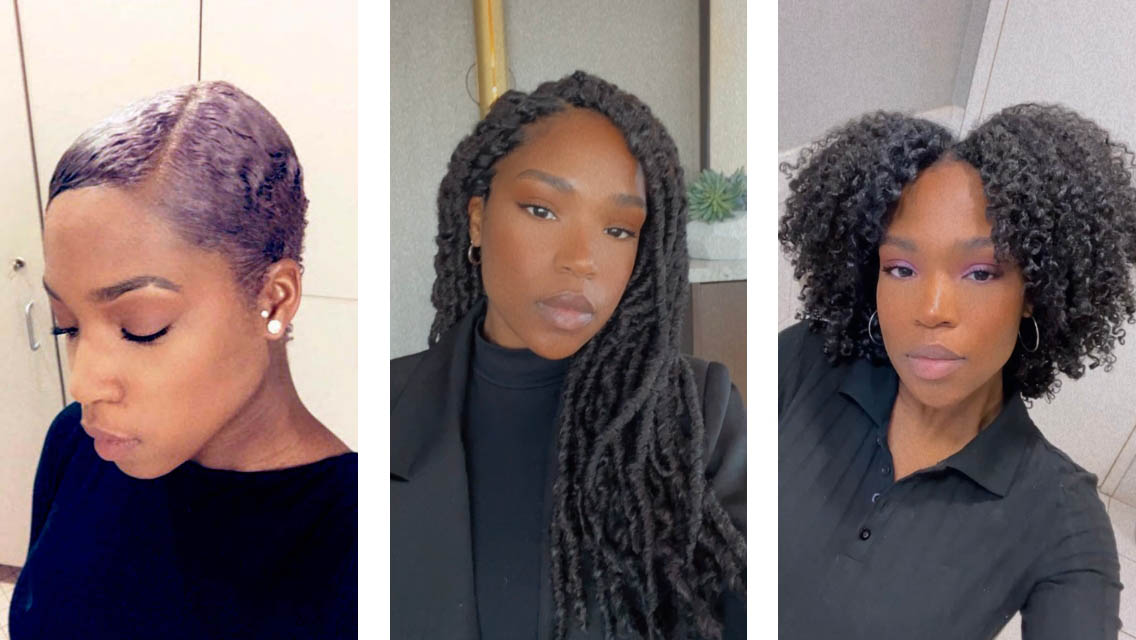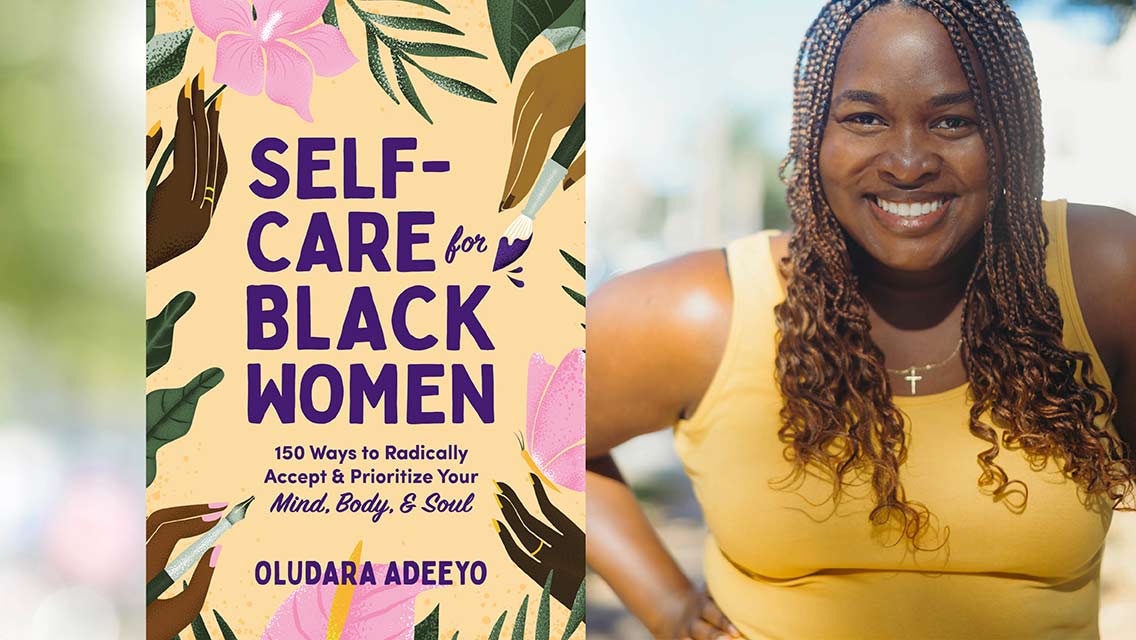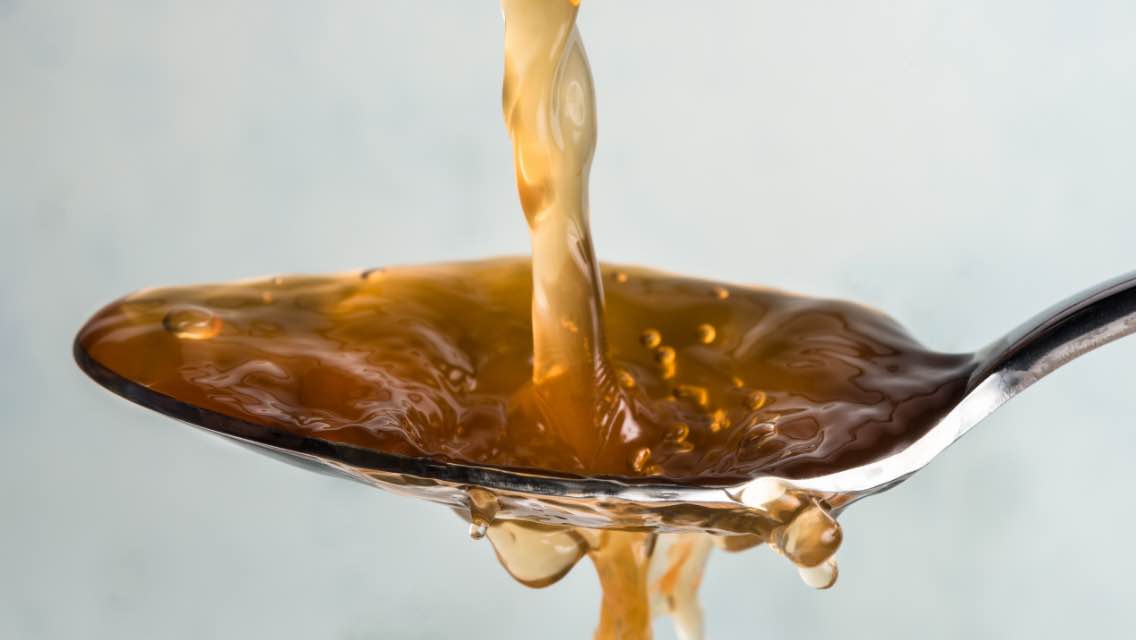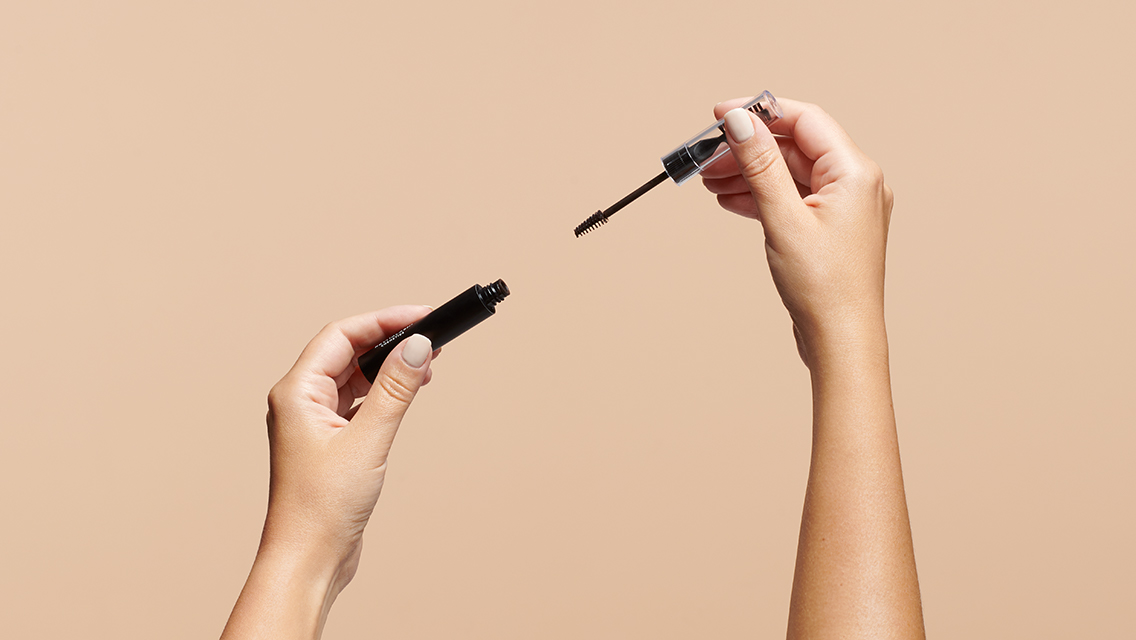My journey toward loving my natural hair texture came about, well, pretty naturally. I have eight sisters, and I grew up loving to do their hair as well as my own. Even before self-care was really a thing, I was doing it. I’d look up ingredients, find what I had on hand, and use them as treatments for my hair and skin.
When I was a child, my mom would take all of us girls to the salon and get our hair straightened with chemical relaxers. Most of my school friends had their hair straightened as well. I didn’t even know I had curly hair as a child because I got it relaxed for so long. It was just what we did.
When I was 18, I enrolled in cosmetology school, which ended up leading to huge turning points for me both in terms of my own hair and my career. One day during class, our teacher told us about a study from Boston University that showed that Black women who frequently used chemical hair relaxers had nearly a 30 percent increased risk of breast cancer.
It was like a switch flipped for me. I’d been getting chemical relaxers for more than 10 years at that point, and I was shocked that something that I had been using to make myself feel good was potentially doing me harm. I went home and chopped off my long, straight hair in two big cuts.
My Hair Transformation
I didn’t think anyone would really care about my hair transformation to natural, but I was wrong. My family took it very personally — they just couldn’t believe I’d chop off my long hair.
My friends at cosmetology school thought it was great, though. I was the first one of us to do something crazy with my hair — a shaved side and mohawk kind of look. After that, several others joined me in chopping off their hair, too.
Going short was the start of a long learning phase. Textured hair can feel as if it grows at a very slow pace, and I went through some awkward growth lengths. So I turned to YouTube and Instagram, which was still new at the time, to learn styling tips. I’d try different styles, such as two-strand twists, that I’d see on those social networks.
My end goal was always to have big hair, and I knew it would get there eventually, but it was going to take some time. So during the grow-out phase, I kept experimenting.
I’ve had my natural hair now for 10 years.
Our Hair. Our Culture.
For many Black women, our relationship with our hair goes far beyond hairstyling. It’s something we’re taught about from a very young age and connects way back into the past for us culturally.
We haven’t seen ourselves represented outside of white beauty standards in the media very much, and we’ve been told for decades that our natural hair isn’t presentable enough for job interviews or other roles. Even a lot of cosmetology schools haven’t historically trained on how to do natural hairstyles — not because it’s difficult, but because it’s time consuming and, like anything, takes effort to learn and practice.
I’ve been really encouraged by what I’ve seen in recent years, though. Within the past decade, I’ve noticed a lot of products for natural hair care come onto the mainstream market. We carry some great lines at LifeSpa with products that work well for curly and textured hair, such as Aveda, Moroccanoil®, and Kérastase.
Curls and big hair are in demand right now, so we’re getting recognition for our styles in ways we haven’t in the past and are reclaiming confidence in our self-expression. The fact that our hair can do and shape into many forms and styles is uniquely beautiful.
While a lot of people choose to express themselves through fashion and makeup, I love changing up my hairstyle to express myself and display confidence, and simply because it makes me feel happy. I don’t think I feel that same level of confidence from anything else.
Embracing Natural Hair Health
With this growing awareness, I was excited to learn the theme of Black History Month this year is “Black Health and Wellness.” Overall, people are becoming more conscious of what’s going on inside their bodies, on their hair and scalp, and what ingredients are in their personal-care products. We can be healthy in what we’re using on (and thereby absorbing through) our bodies, practice self-care, and feel confident rocking our natural locks.
While I’m a well-rounded stylist, I describe myself as a “natural hair enthusiast.” For me, “natural” goes far beyond textured styling: I care about the integrity of the hair first. I won’t recommend a client do something that I think will harm, deplete, or damage their hair, such as going from very dark (level two) hair to blond (level 10) in a single day or using chemicals like relaxers that are not only hazardous to our health, but also weaken and damage the structural integrity of the hair.
If we focus on keeping your hair healthy first, and your hair is in a good state, then we can achieve the look you want while preserving healthy hair and a healthy scalp.
Tips for Going Natural
Your natural hair journey is all about self-discovery. This learning process can also help you understand how to properly care for your hair; it will speak in different ways, responding to what products it likes more than others.
If your hair has been damaged and the integrity of your hair is weakened, going natural can help your hair return to a healthier state. Doing a big cut, as I did, or chopping the length even a bit at a time while you get used to a new look can help to reset your hair structure, allowing everything to grow at closer to the same pace.
Without the damaging product applications, your hair may feel like it’s growing back thicker. And if you have curls, they’ll be better able to do their thing, too!
1. Wash and condition weekly or within every 12 days. There’s long been a misconception that because textured hair can be drier, you don’t need to wash it very often. Yet you want to keep your scalp clean and healthy. Start a consistent wash schedule and stick with it. I like to use Aveda brilliant™ shampoo, which is a clarifying shampoo that really gets your scalp clean. Conditioner maintains the hydration in your hair, and I’d say that’s one of the most important parts of your wash day.
If scalp dryness is an issue for you, you can apply a moisturizing cream or oil to your scalp while your hair is still dry and give it about 10 to 15 minutes to absorb. Then, hop in the shower to begin your washing and conditioning process.
2. Use moisturizing products. After you’ve washed and conditioned, exit the shower and gently squeeze out excess moisture from your hair with a towel. Apply a moisturizing mask, and let it sit in your hair for an hour each week while you relax or do some chores. (If you don’t have an hour to spare, you can also apply this directly after you wash and condition, letting it sit while you’re still in the heat of the shower and going about shaving, sugar scrubbing, or other self-care activities for as long as time permits.)
Or, try applying a split-end treatment when you’re out of the shower like the Aveda damage remedy™ daily hair repair leave-in treatment. Use a treatment like this when the ends of your hair feel on the drier side or tend to become tangled more frequently.
3. Try an intensive salon treatment. If you’re looking for more of a full reset without a big chop to the length, consider a salon-quality service for intensive conditioning or repair.
I just started doing K18 Peptide™ treatments at LifeSpa, and they’re amazing! K18 brings hair back to its original health by repairing broken keratin chains in just minutes, and it can be used for any kind of hair damage — heat, color processing, or chemical relaxers. It’s especially good for healing, moisturizing, and defining curls.
4. Experiment with protective hairstyles. Playing around with different protective styles allows you some freedom of expression while also keeping your hair healthy and allowing for growth.
You can go from two-strand twists to buns, cornrows, braids, or other styles — just be careful not to go too tight or too small, which can pull on or stress the hair and scalp. Some of these styles, such as box braids, can last up to two months, then you get the chance to switch it up and try something new.





